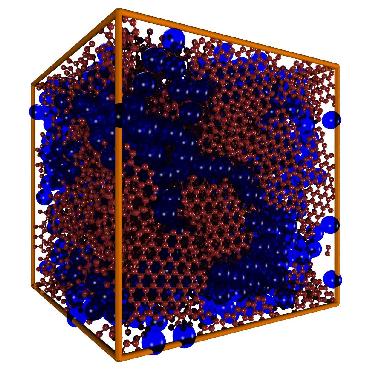Our research program is aimed at understanding, at the molecular level, the behavior of nano-dimensional fluids and solids. The underlying theme of our work is to develop molecular models that accurately describe the materials and systems of interest. These models are then used in molecular simulations and theories to interpret experimental results, and to predict behavior that is not accessible to experiment. Experimental studies complement the molecular simulation work, and comparison of the two frequently leads to important new insights.
Currently our interest is focused on several kinds of system: (a) Micellar and reverse micellar solutions – their phase behavior, thermodynamics, surface properties and structure; (b) Nano-porous materials (solid materials having pores of nanometer dimension), such as templated mesoporous materials (MCM-41, SBA, etc), activated carbons, carbon buckytubes, aerogels and xerogels, silicas, etc.; (c) Chemical reactions in nano-scale systems, where strong intermolecular interactions are important (porous materials as nano-scale reactors, reactions in supercritical fluids, etc.). Micellar solutions are important in separations and in new technologies based on CO2 solvent applications. Nano-porous materials play a prominent role in chemical processing, particularly in separation and as catalysts and catalyst supports. They can also form the basis of future technologies, involving energy storage, as nano-reactors, as sensors, fabrication of small devices of molecular dimensions, etc. Both the yield and rate of chemical reactions are strongly affected by the reduced dimensionality of nano-scale systems, and experimental studies are very difficult at this scale.
Current areas of research fall into three areas.
- Micellar and reverse micellar solutions – their phase behavior,thermodynamics, surface properties and structure.
- Nano-porous materials such as templated mesoporous materials (MCM-41, SBA etc.), activated carbons, carbon buckytubes, aerogels and xerogels, silicas etc.
- Chemical reactions in nano-scale systems, where strong intermolecular interaction interactions are important.

